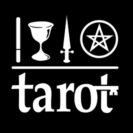The phenomenological approach to tarot readings is very different to applying meanings and studying symbols. Whatever deck you use, the symbols don’t change on the cards. What does change for every reading, irrespective of the tarot deck, is the sequence or order of the cards.
Phenomenology is everything
Phenomenology is the study of the way something presents itself. In a tarot reading, we study the way the client presents herself as she enters the room, sits down, and prepares for the reading. We see how she holds the tarot deck, shuffles it, and places the deck on the table.
Then we see how she cuts the cards – is it tentative, is she positive? Is she indecisive? Does she have a problem following the instructions for cutting the cards?
The Body is more sensitive than the Mind
All these clues will set up a resonance within the body of the tarot reader, for it is the body that is sensitive to energetic changes, sensation, or blockages. The mind does not perceive these energy movements. Focussing on the meaning of the cards and the symbols keeps the tarot reader in their head, cutting off the vital information.
The phenomenological approach is continuous, for there are energy changes throughout the reading. For example, I will notice how my response changes during the ritual of cutting the cards. While the process of cutting the cards is exactly the same for every reading, as I briefly describe each of the four stacks of cards, there is always variations.
There are energetic variations in the ritual of turning over the four stacks to reveal the top cards, and how I speak about those top cards.
Phenomenological Events
Seeing those top four cards presented for the first time in the reading is a phenomenological event, for this is also a point in the reading where the client responds to the images, which resonate with her own situation.
An exploration of the client’s situation begins. Whatever I am experiencing in my body reflects the experience of the client, which is something I have to articulate.
The length of time for analysing those top four cards can be less than a minute, to a much more detailed study. However long, the next stage is to fan out the Future pile.
The Future pile is where the action is. While there are techniques of card counting, elemental dignities and pairing, the phenomenological approach is simply to step back and take in the nature and order of the cards. Just by observing without judgement or expectation, an overall picture of what is going on in life of the client is presented. The client can see the cards too, but they probably will not make sense until I start to describe what we have. I have no idea what I will say until I see those cards, and one or two will catch my eye
Critical to this approach is the need for a dialogue between the reader and the client, which creates the space for exploration of the issues and expectations. At some point the energy will change to give resolution to the reading, and give the client confidence to move forward in her life.

0 Comments